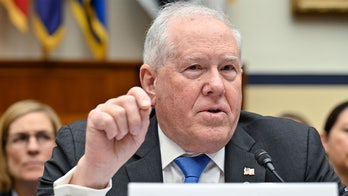Going into his second term, President Obama may find himself more beholden than ever to America's labor unions, even as their membership continues to decline -- lately, to just 11.8 percent of the workforce.
The unions, as in 2008, contributed heavily in manpower and money to Obama's election this year. The president, in return, has made a point of supporting them -- like with his post-election visit to the Daimler Diesel Plant in Dearborn, Mich., on Dec. 10.
"You only have to look to Michigan where workers were instrumental in reviving the auto industry to see how unions have helped build not just a stronger middle class but a stronger America," Obama said.
But Obama could be going against the legislative tide. The president's dilemma was demonstrated in the fact that a day after that visit, the union stronghold of Michigan became the 24th state to pass a right-to-work law preventing unions from demanding dues from workers.
Hampered in the states by right-to-work momentum -- and in Washington by a divided Congress, and abroad by low-cost competition -- the unions may see limited options on the part of the president to reward them. But they still expect some payback.
"There are things a president can do alone, and we will be expecting that leadership from President Obama," AFL-CIO President Richard Trumka said in the immediate aftermath of Obama's re-election victory.
Trumka may have been referencing the Obama administration's enthusiasm for new federal regulations and executive orders, some of which have benefitted unions and penalized non-union employers. More than 5,700 new regulations have been posted in the last 90 days alone.
But union leaders have also been exploring other options that address the fundamental realities of globalization that have decimated U.S. manufacturing. "The way to do it, from a union's perspective, is to raise those workers' pay around the world," said Democratic strategist Joe Trippi.
U.S. unions are trying to do just that, laying the groundwork, as Trumka said last year, "to protect workers from Detroit to Juarez and Shanghai to Bogota." Getting foreign governments and multi-national corporations to agree is, admittedly, a long-term strategy for labor organizers. But as standards of living increase in those third world countries, union organizers hope so too will workers' thirst for greater protections.
The most recent high-profile union fight has involved dockworkers all along the East and Gulf coasts. They had threatened a strike at 14 ports stretching from Massachusetts to Texas - but a 30-day contract extension agreed to by dockworkers, shippers and port operators last Friday temporarily averted the shut-down.
Mediators have said the major sticking point -- over fees paid to longshoremen based upon the weight of each individual container -- has largely been resolved. But they would not describe how it was resolved, as negotiations continue.





